November 4, 2021 Auroras
Chippewa National Forest
After a busted aurora chase the evening of October 30, a long duration, M1 flare occurred from an Earth-facing sunspot. This flare launched a coronal mass ejection (CME) headed squarely for Earth. The main question was what time the flare would arrive. The flare from the previous week's X1 class flare was later and weaker than anticipated (also, the CME cloud did not appear very bright in the northern quadrants, so there might not have been much material headed toward Earth), but I was thinking this M1-class flare could produce a good show.
The impact occurred in the afternoon on November 3. Initially, it did not look very impressive with near neutral Bz and a Bt around 10 nT. However, Bt gradually increased, and Bz went south. This would provide some pretty nice auroras. I pondered whether or not Bz would do its seemingly typical flip from south to north around sunset.
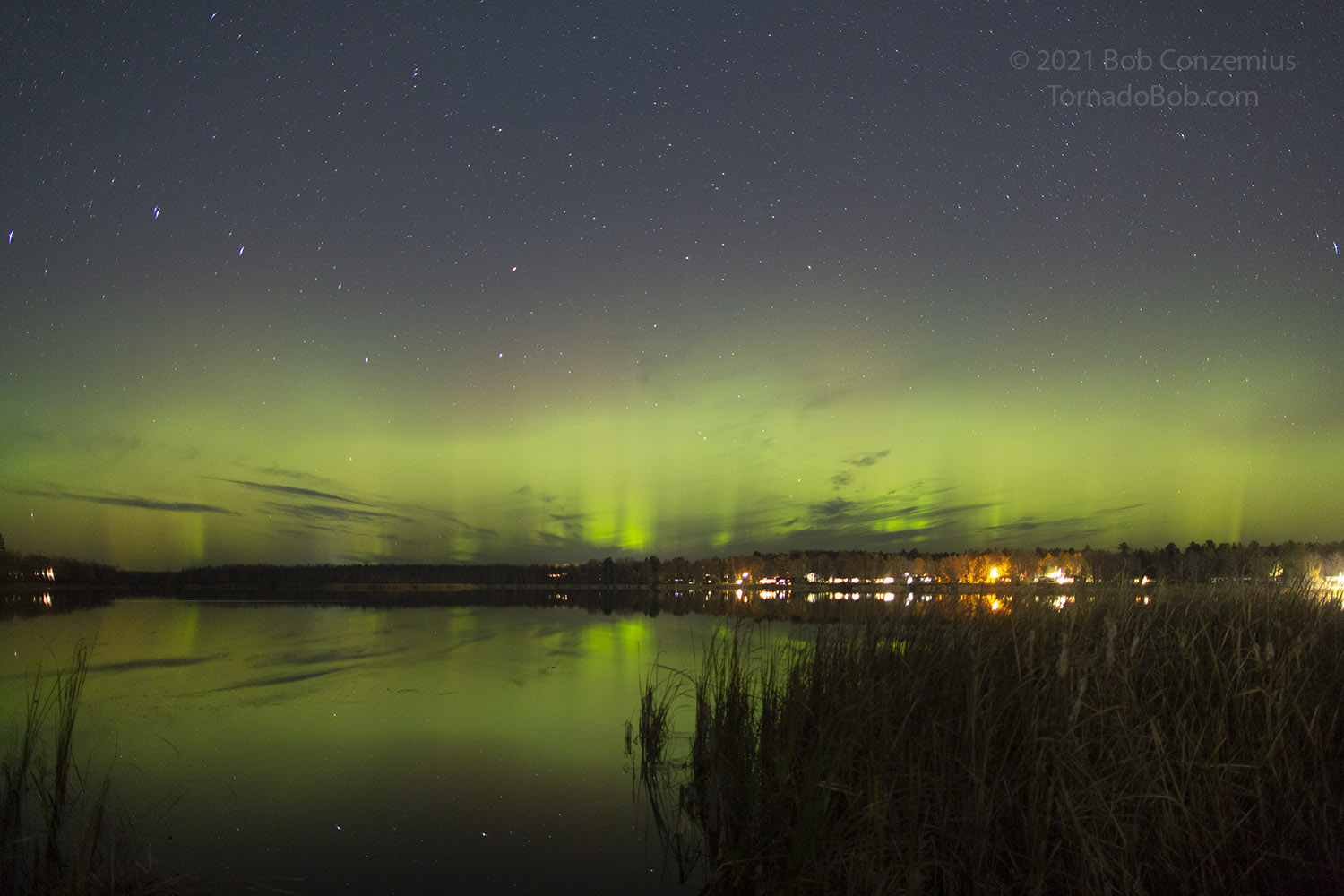 |
| Mid evening auroras viewed over McKinney Lake in Grand Rapids. |
Indeed, this happened, more or less. However, there was a sufficiently lengthy period of southward Bz to make the auroras likely to persist into the evening. Also, Bz eventually tipped back south for a little bit and then went persistently neutral. I decided to meet some friends at McKinney Lake at the northern side of town. I watched a brightening of the auroral oval before my friends arrived, and when they arrived, the auroras had settled down a little bit but were still fairly active. Soon, however, they dimmed, and with Bz hovering around neutral, I decided to call it a night.
I headed to bed with the possibility of a strong auroral showing in the back of my head because Bt was still in the upper teens. If Bz turned south for any length of time, the auroras would brighten up dramatically. I went into a sound sleep then woke up a bit, thinking I should check conditions, then drifted off to sleep again. I woke up a second time, and this time, I stayed awake long enough to reach over and look at my phone.
Bz was in the negative mid teens! That made me jump right out of bed and run to the bathroom window, which faces north, to see if there was anything visible from inside the house. It's usually pretty tough to see auroras from inside the house because I look right at the neighbor's roof, and there are city lights shining on my screens, but I could immediately see bright, pulsating auroras! Time to get dressed and outside! I snapped a picture from my driveway.
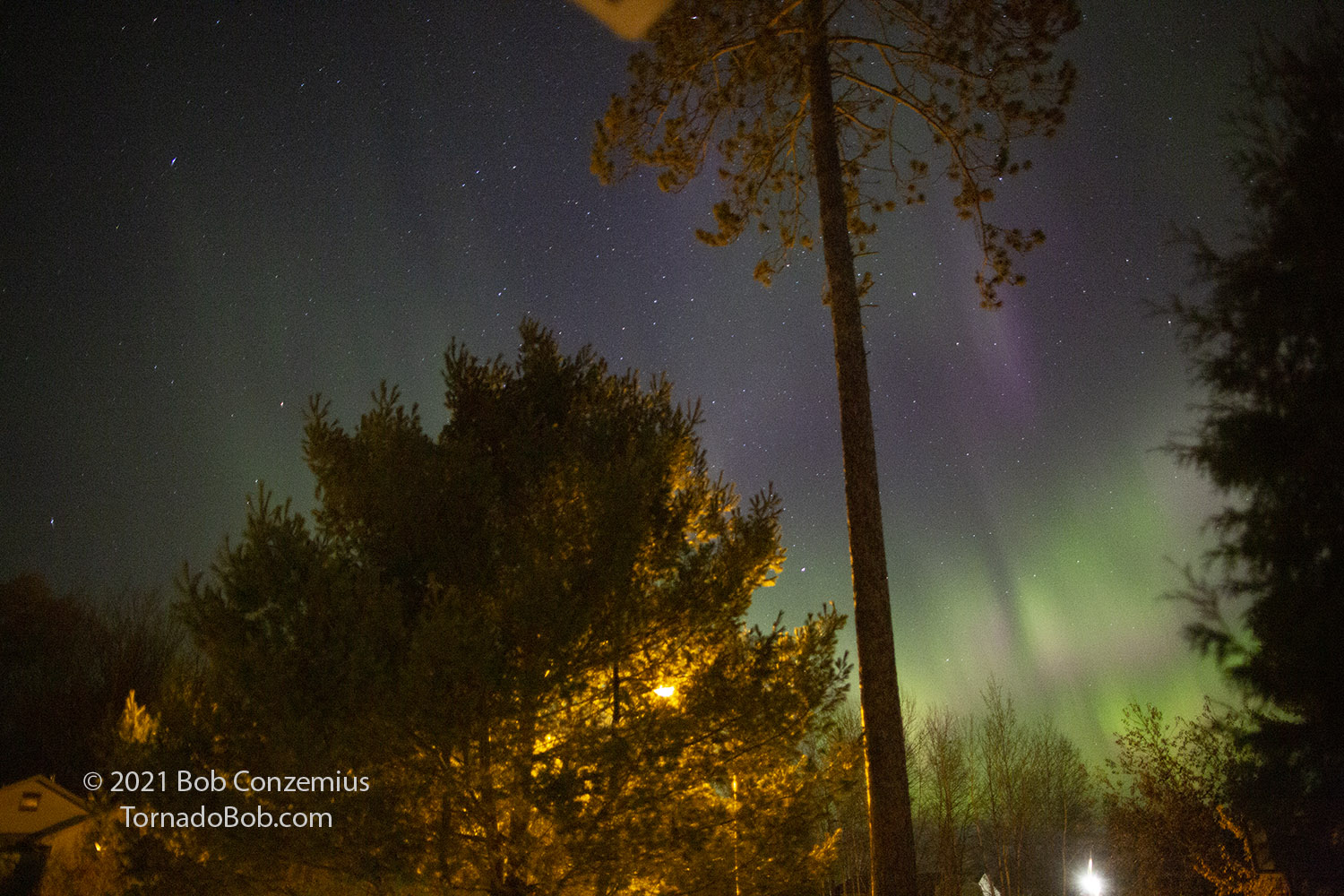 |
| Handheld shot (f1.4, ISO12800, 0.4 sec) from my driveway. |
I already had everything I needed in the car, so I loaded up some additional warm clothing and headed out. I thought I should be taking photos ASAP while this active episode was in progress, so I drove just a couple blocks to the Sylvan Bay boat landing and started snapping away. When the auroras get bright and active, shooting in town is not much of a hindrance.
 |
| Auroras over Sylvan Bay and the Mississippi River. The Minnesota Power Clay Boswell coal plant is on the horizon. The Blandin wood lot is on the right behind the trees. |
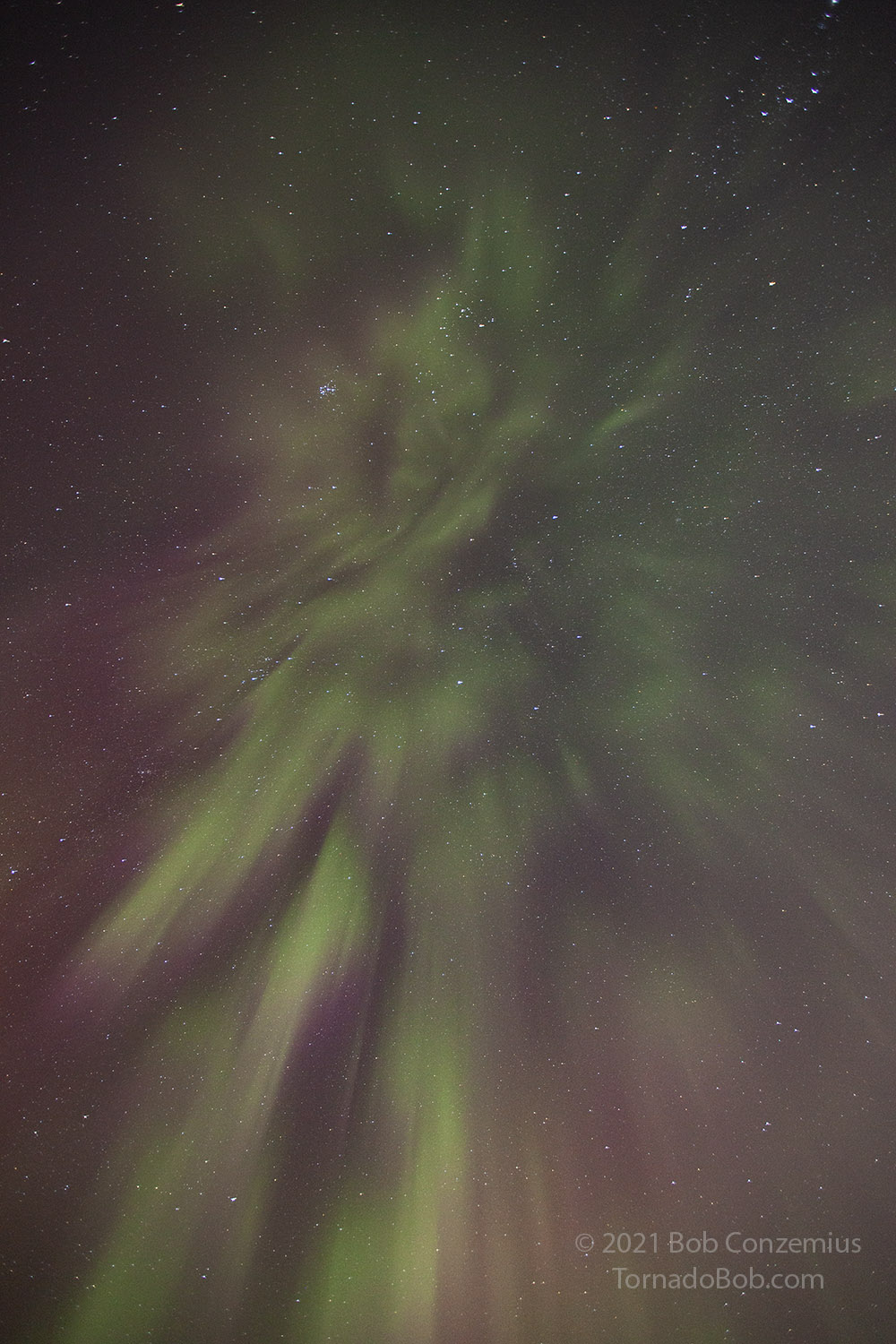 |
| A "corona" of auroras occurred as they began to spill into the southern sky. |
Satisfied that I had gotten enough pictures in town (and with the show still ongoing), I drove north to get out of the city lights. I stopped on Highway 38 just north of town and took a time lapse sequence at Pughole Lake. The show was still going pretty strong then. I thought it might be a good idea to go to a smaller lake since auroras were pretty high in the sky, but Pughole Lake is always a good spot to shoot a few pictures first.
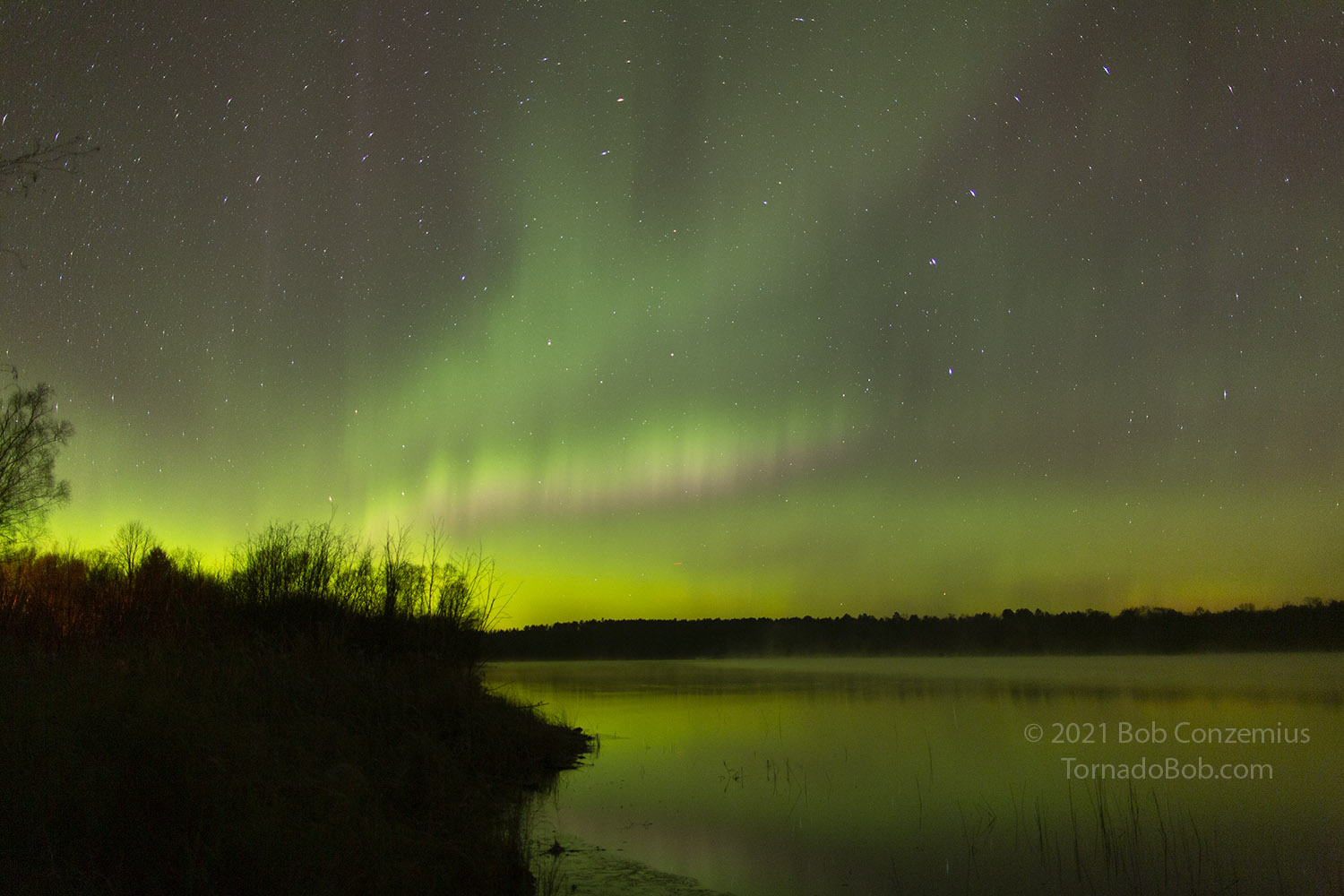 |
| Auroras over Pughole Lake. |
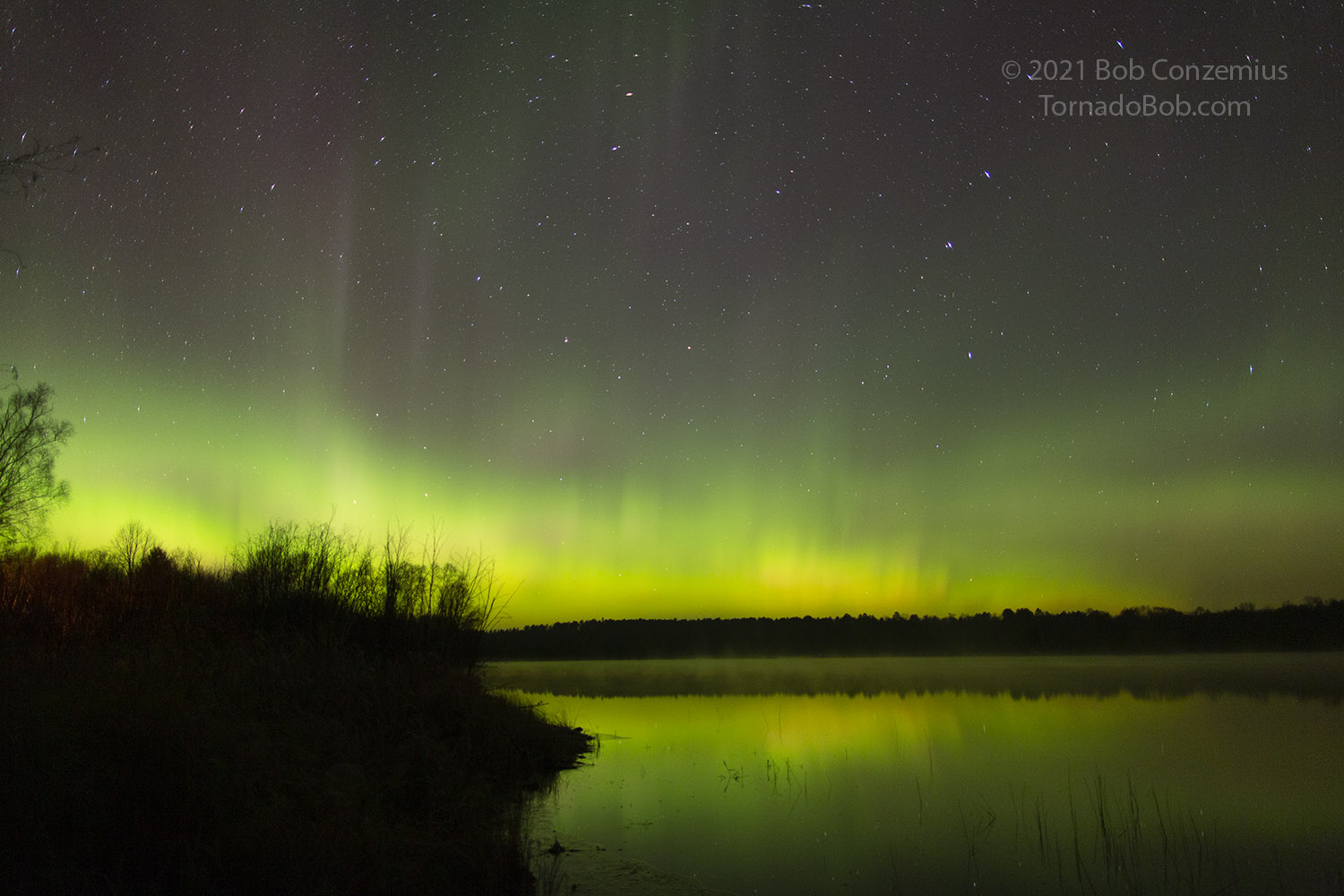 |
| A Suomi NPP satellite overpass was occurring when I took this picture. Compare this picture to the next image below. |
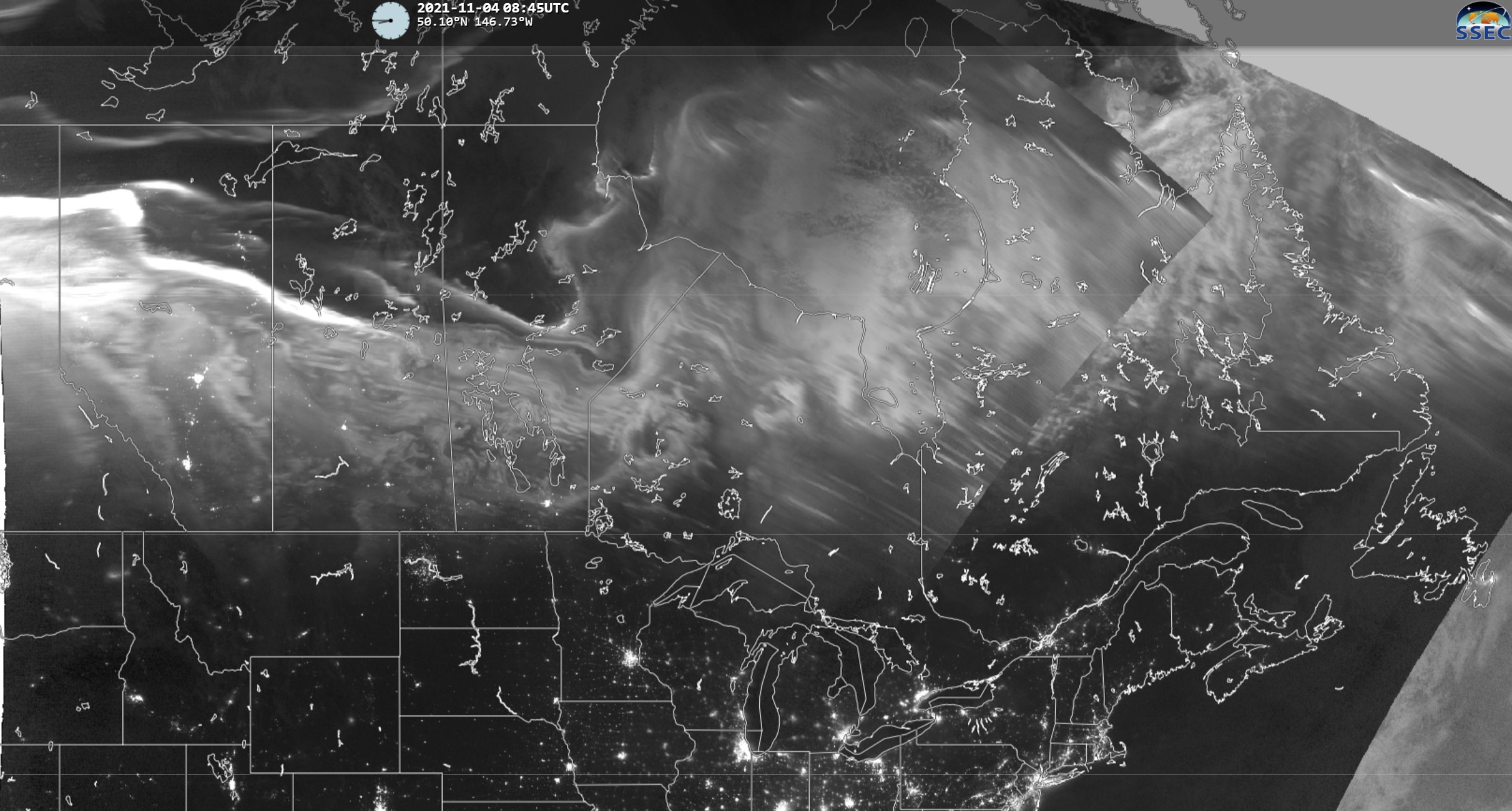 |
| A Suomi NPP VIIRS image from when I was at Pughole Lake. |
During this time-lapse sequence, I thought about which lakes I could go to farther up Highway 38. I considered Day Lake (canoe launch) and Caribou Lake (boat launch), but I got to the Little Long Lake Road first and took a right turn. I had shot there once during the big storm of June 22/23, 2015. This time, the auroras weren't quite in such an overhead formation, but I looked at my navigation system and saw that it does have a decent north view (I didn't need that north view on 6/23/2015.
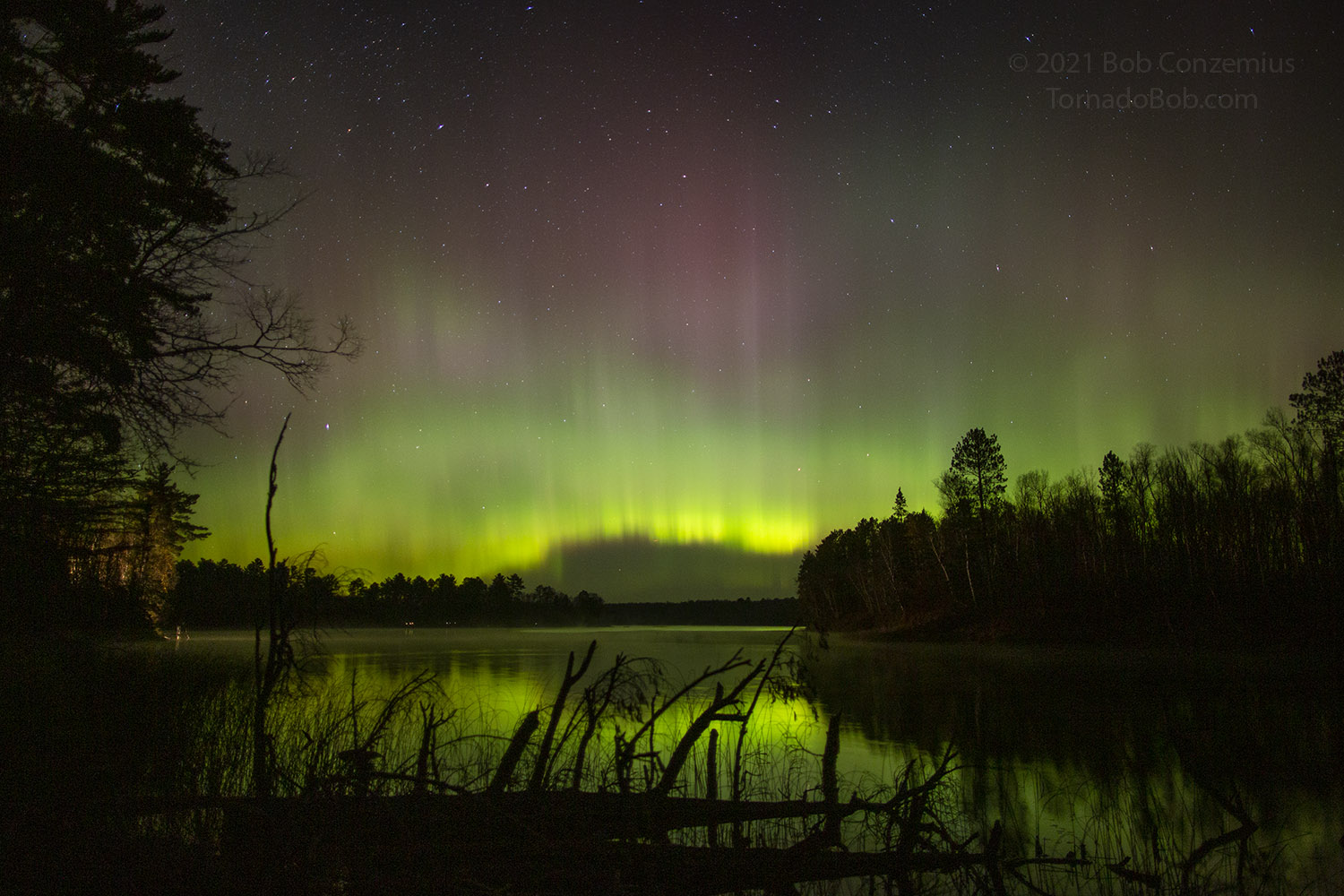 |
| My first shot at Little Long Lake. |
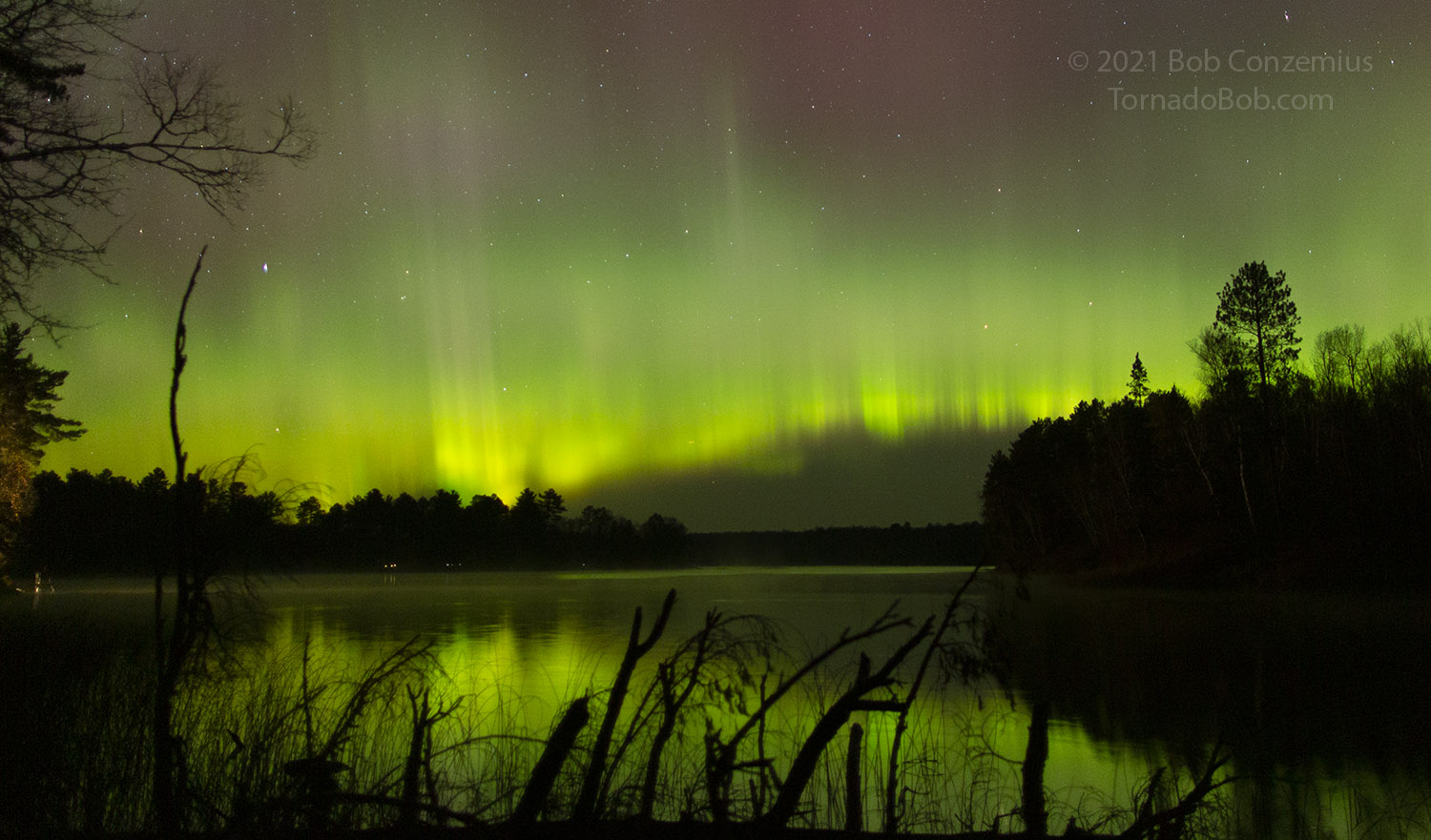 |
| The auroras are moving around brightly at this point. |
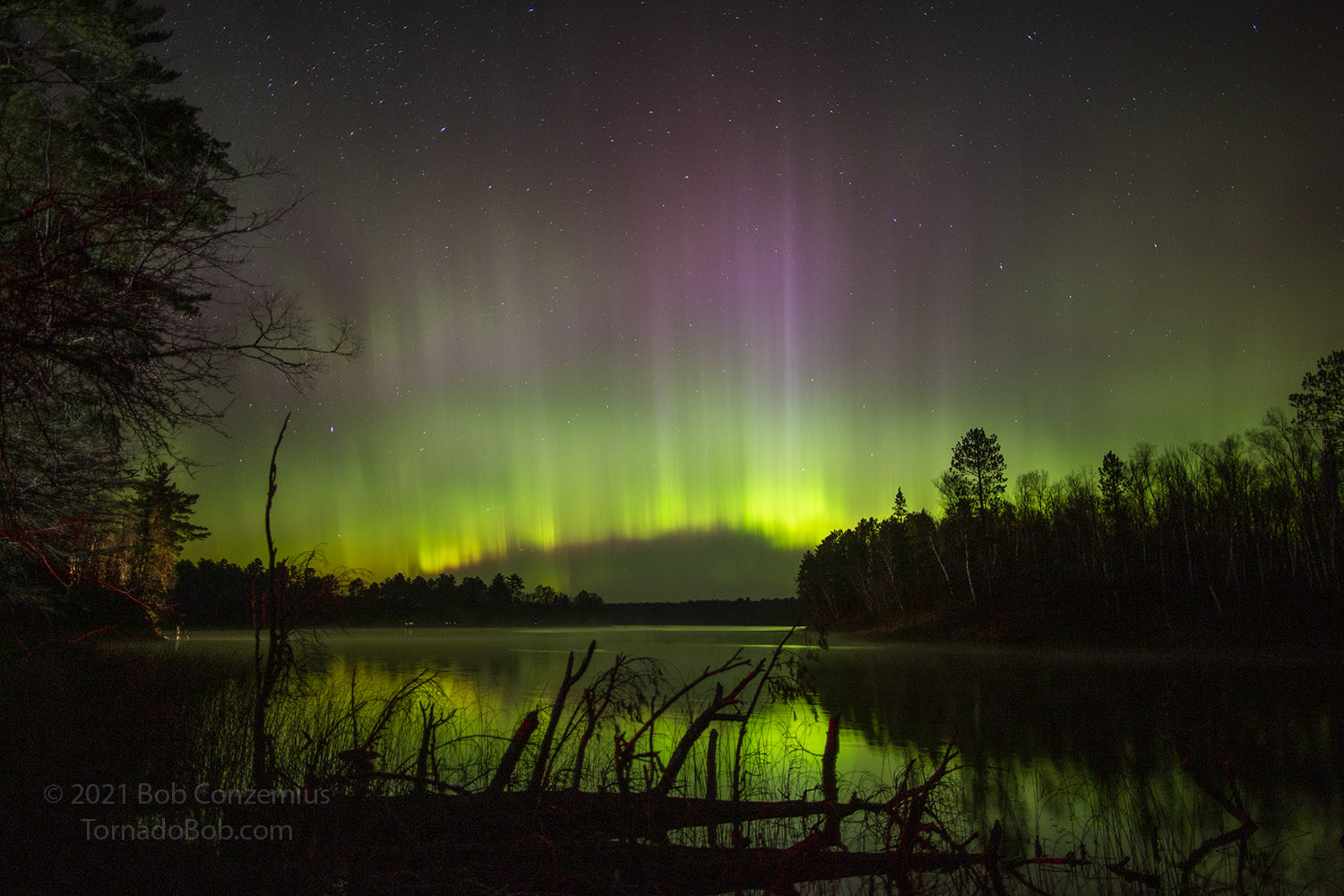 |
| A larger variety of colors appears. |
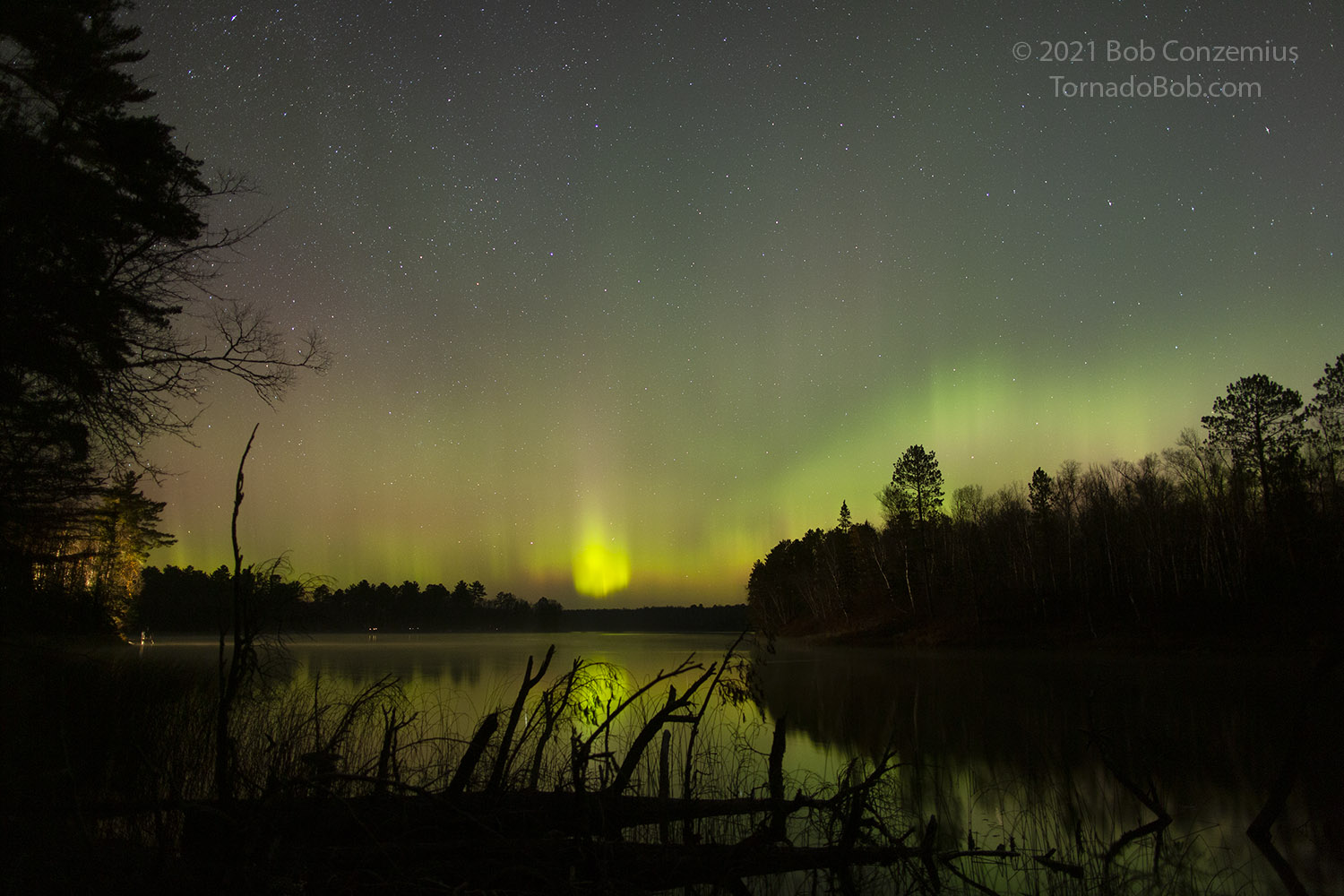 |
| A lone pillar as the auroras mostly dim a bit. |
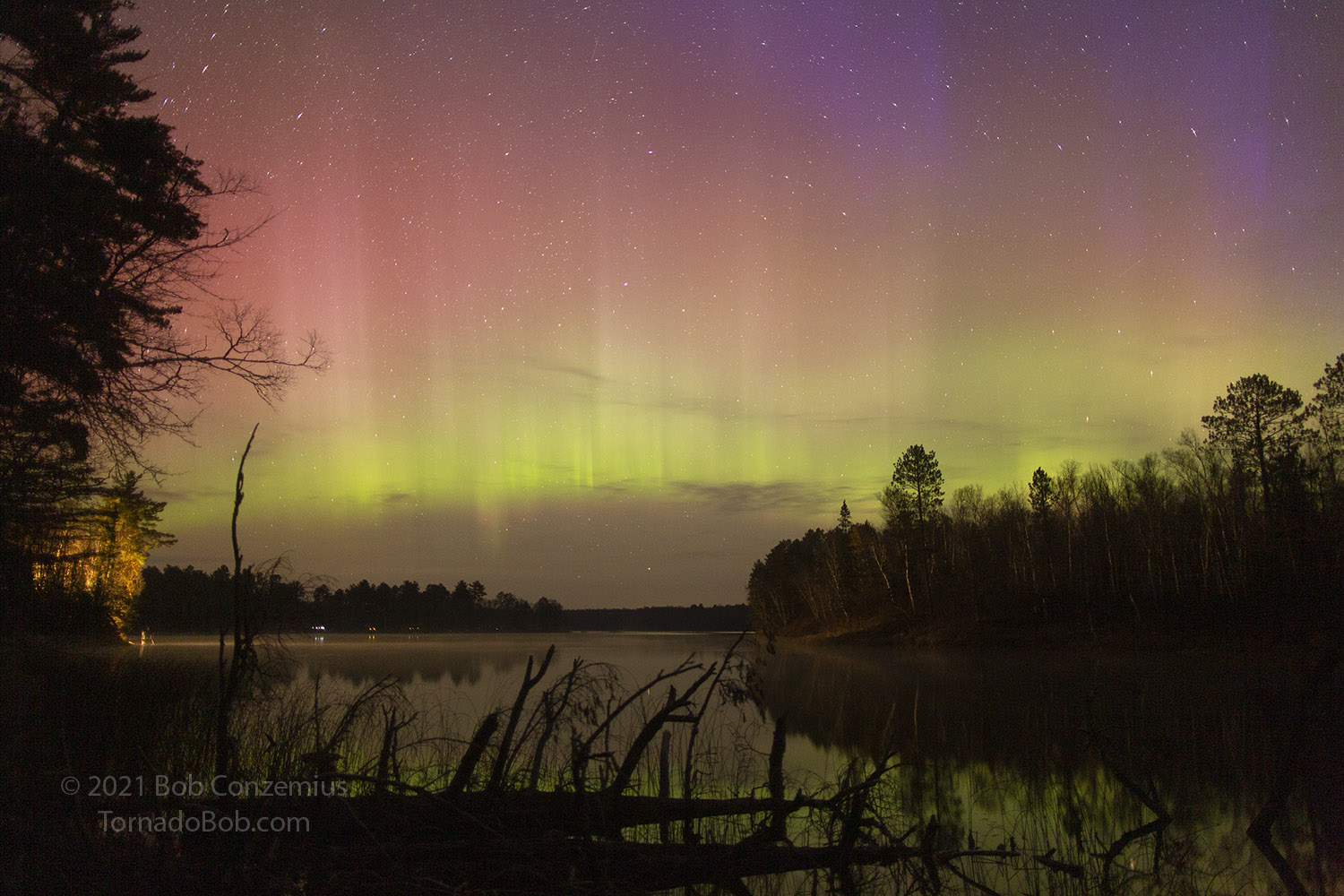 |
| Closer to early morning twilight, the activity is picking up again. |
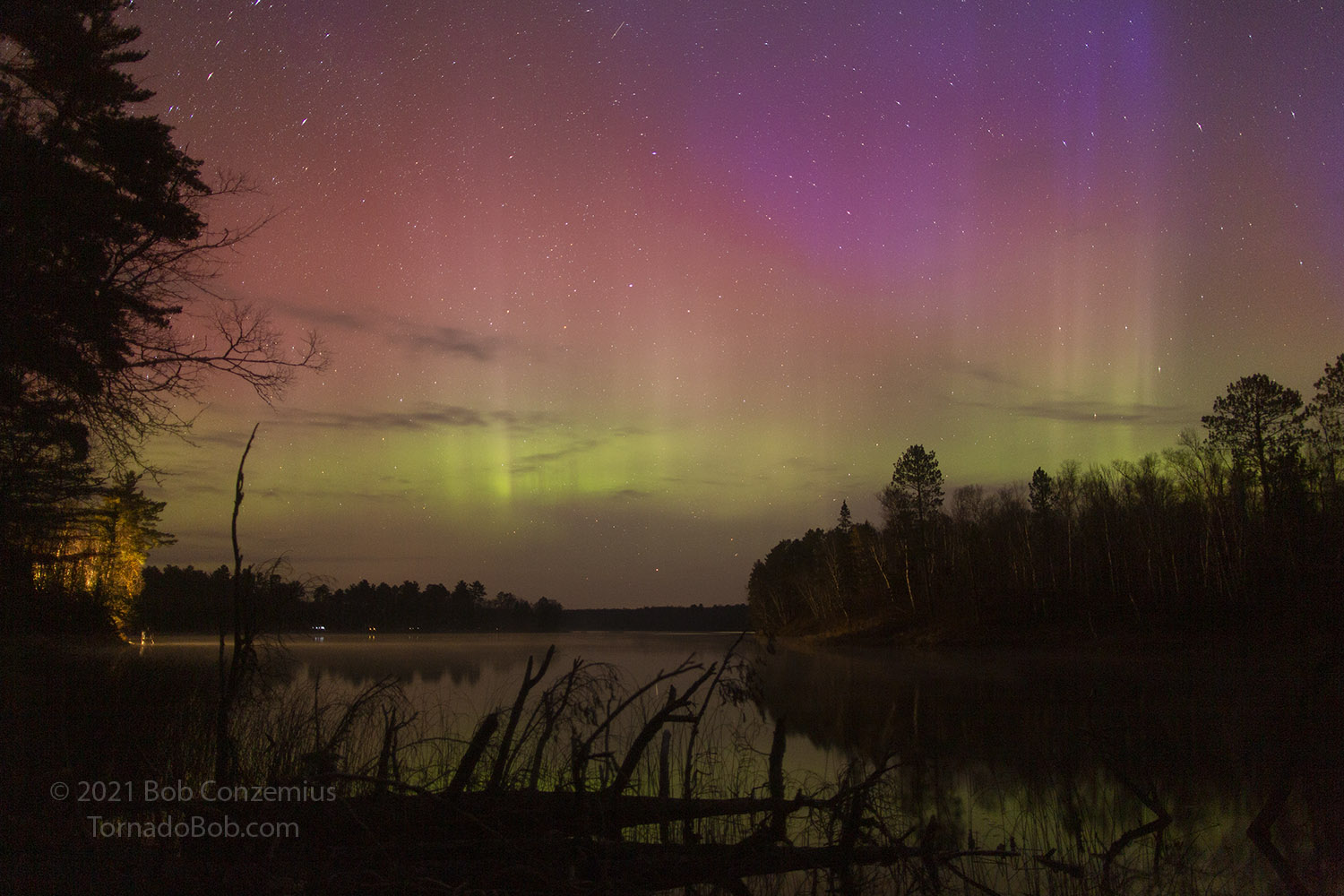 |
| A variety of colors fill the screen. To the east, where the atmosphere is more exposed to sunlight, there is an addition of violet. |
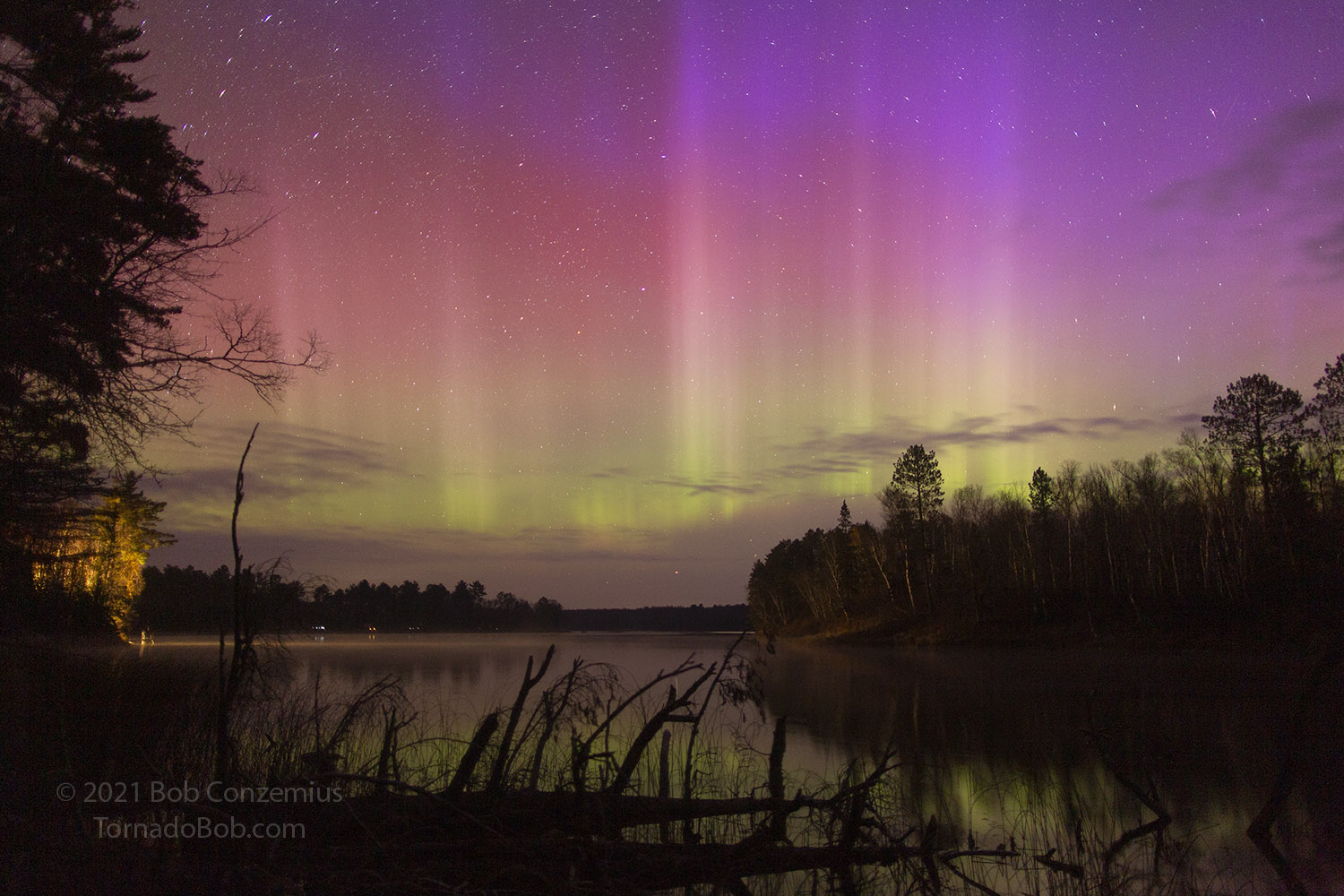 |
| Here is the brightest of the early morning display. It's interesting how the sunlight cuts across the columns and changes their color. |
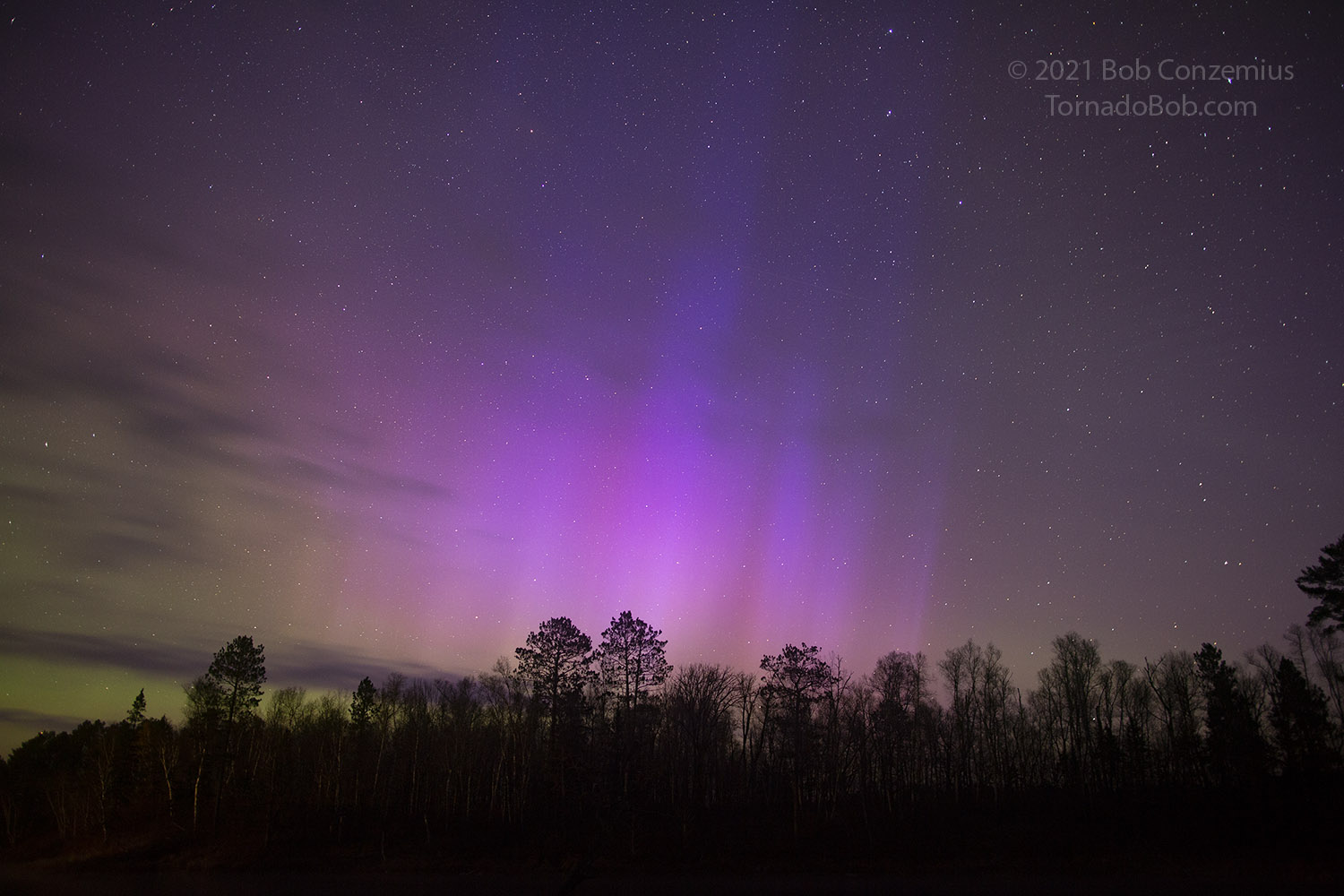 |
| For my last shot with the 24mm lens, I turned the camera more to the east. |
 |
| I also had the 16mm shot set up during the event. This shot was taken about 4:20 AM. |
 |
| 16mm at about 6:05 AM. |
 |
| This is one of my last shots, at 6:25 AM, looking east. The auroras are to the left, and to the right is the zodiacal light caused by scattering of sunlight from dust and objects in the ecliptic plane. |
.png) |
| Solar wind magnetic field and speed data from the 24-hour period. |
Back to Auroras | Home

















.png)
